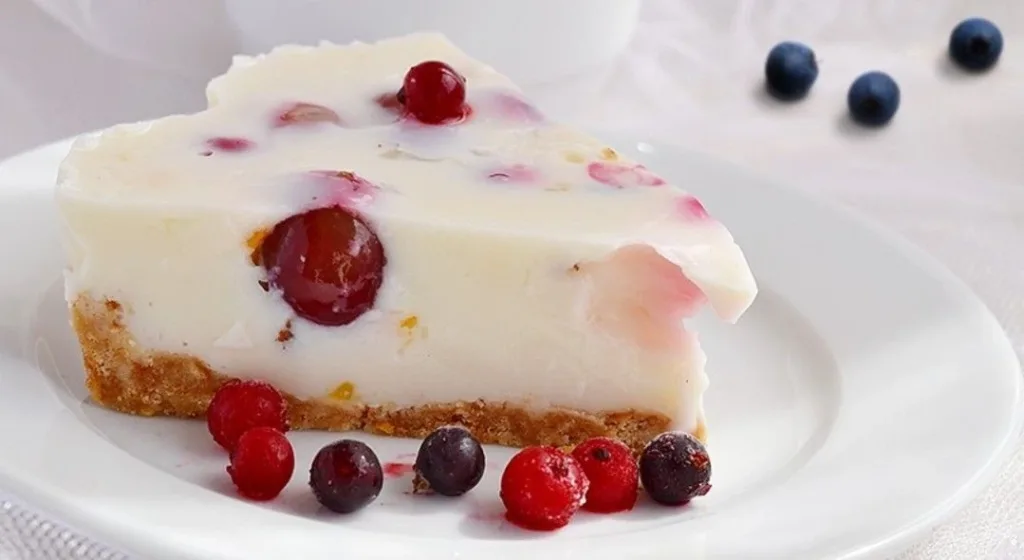Baking is a science, and every ingredient plays a vital role in the chemistry of creating a delicious and moist cake. Yogurt is one such secret ingredient that can completely transform the texture, moisture, and flavor of a cake. Whether you are a seasoned baker or a beginner, understanding the function of yogurt in baking can elevate your cakes to a whole new level.
Introduction to Baking with Yogurt
Yogurt has been a staple in many traditional recipes, and over time, it has made its way into modern baking. Known for its rich texture and tangy flavor, yogurt brings more than just taste to baked goods. When used in cakes, it provides a balance of moisture and tenderness, making it a preferred ingredient for fluffy and light cakes. But what exactly does yogurt do in baking, and how can you use it to improve your cakes? Let’s dive into its functions and benefits.
Question & Answer Section
Q1: Why should I use yogurt instead of milk in my cake recipe?
Yogurt is thicker and creamier than milk, which helps to add moisture to the cake batter without making it too runny. This leads to a denser, richer cake that stays moist for longer periods. The tang from the yogurt also balances out the sweetness of the cake, making it perfect for cakes that use a lot of sugar.
Q2: Can I use flavored yogurt in baking cakes?
Yes! Flavored yogurts can be used to add an extra layer of flavor to your cakes. However, it’s essential to consider how the yogurt’s flavor will blend with the other ingredients. For instance, vanilla yogurt works well in almost any cake, while fruity yogurts are best in recipes where the fruit flavor can complement the cake.
Step-by-Step Recipe Guide
Let’s put yogurt to the test by baking a delicious, moist cake using yogurt as one of the key ingredients.
🎂 Recipe: Yogurt Vanilla Cake
Ingredients 🎂
- 1 ½ cups all-purpose flour
- 1 cup sugar
- 1 tsp baking powder
- ½ tsp baking soda
- ½ tsp salt
- ¾ cup plain yogurt
- ½ cup vegetable oil
- 2 large eggs
- 1 tsp vanilla extract
- ¼ cup milk (optional, for thinning the batter if too thick)
🍽 Directions 🍽
- Preheat your oven to 350°F (175°C) and grease a 9-inch round cake pan or line it with parchment paper.
- Mix dry ingredients: In a large bowl, whisk together the flour, sugar, baking powder, baking soda, and salt.
- Combine wet ingredients: In another bowl, whisk together the yogurt, vegetable oil, eggs, and vanilla extract until smooth.
- Incorporate dry ingredients into wet ingredients: Gradually add the dry ingredients into the wet mixture. Stir gently until just combined. Avoid overmixing to keep the cake tender.
- Add milk if needed: If the batter is too thick, you can add up to ¼ cup of milk to thin it out slightly.
- Bake: Pour the batter into the prepared cake pan and bake for 30-35 minutes or until a toothpick inserted into the center comes out clean.
- Cool & Serve: Let the cake cool in the pan for 10 minutes before transferring it to a wire rack to cool completely.
The Role of Yogurt in Baking Cakes
1. Moisture Retention
Yogurt helps retain moisture in the cake, ensuring it stays soft and tender for days. Unlike milk, which adds liquid but can evaporate during baking, the fat and creaminess of yogurt trap moisture within the cake.
2. Enhances Flavor
The slight tanginess of yogurt provides a balance to the sweetness of a cake, making it more flavorful. This works exceptionally well in cakes that use fruit, chocolate, or vanilla as the primary flavor.
3. Leavening Agent
Yogurt contains natural acids that react with baking soda, helping to leaven the cake. This reaction creates tiny bubbles, giving the cake a light and fluffy texture.
4. Substituting Yogurt for Other Ingredients
Yogurt can replace ingredients like buttermilk, sour cream, or even butter in certain recipes. It’s a versatile ingredient that offers both creaminess and acidity.

Recipe Variations
- Lemon Yogurt Cake: Add the zest and juice of one lemon to the yogurt cake recipe for a refreshing citrus flavor.
- Chocolate Yogurt Cake: Substitute ½ cup of flour with unsweetened cocoa powder for a rich, chocolatey cake.
- Greek Yogurt Cake: Use Greek yogurt for an even thicker and more luscious texture.
FAQs
Can I replace oil with yogurt in cake recipes?
Yes, you can substitute yogurt for oil in cake recipes to reduce fat content. For every 1 cup of oil, use ¾ cup of yogurt. The cake will remain moist, but it may have a slightly tangier flavor.
How long does a yogurt cake stay fresh?
A yogurt cake stays fresh for about 3-4 days when stored in an airtight container at room temperature. You can also refrigerate it for up to a week or freeze it for longer storage.
Internal Linking Suggestions
- Consider linking to the classic apple crisp recipe as a complementary dessert for your readers who enjoy baking with fruits.
- Another useful link would be the bundt cake recipe, which highlights another form of cake where yogurt can enhance texture and moisture.
- For more ideas on how to pair yogurt with other ingredients, the strawberry cupcakes recipe offers insights into fruit-based cakes.
Conclusion
Yogurt is an invaluable ingredient in baking cakes. It offers moisture, richness, and a balanced flavor that elevates the texture and taste of your cakes. Whether you are baking a simple vanilla cake or experimenting with flavors, incorporating yogurt can make a noticeable difference.
